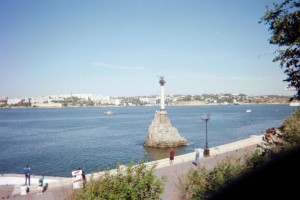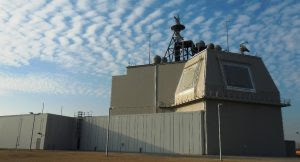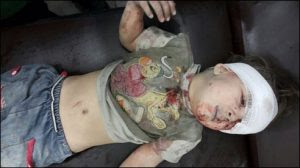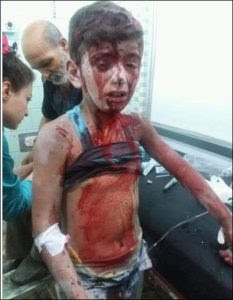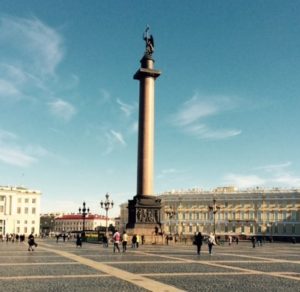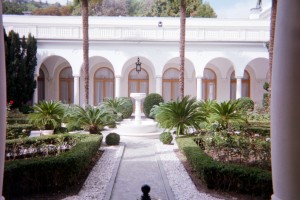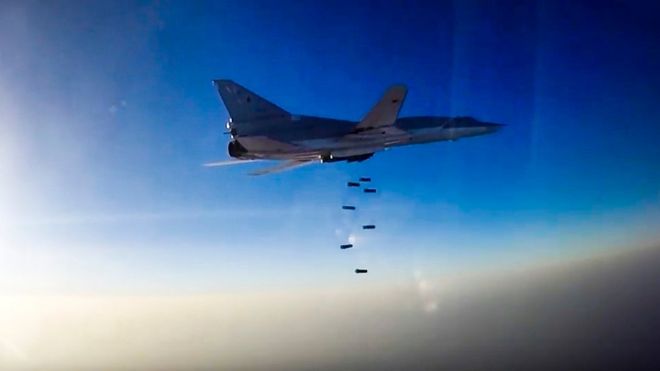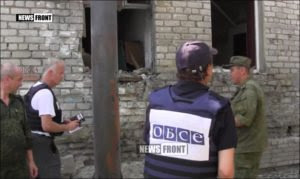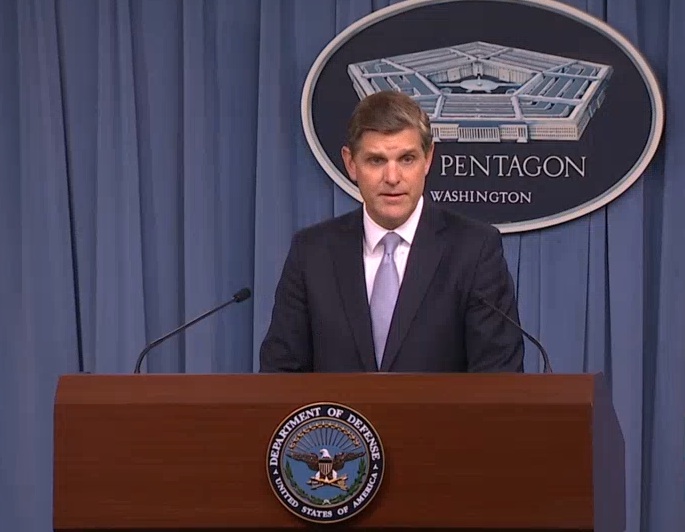
(https://www.c-span.org/video/?414272-1/defense-department-briefing)
Daniel McAdams, a foreign policy analyst at the Ron Paul Institute for Peace and prosperity, has raised some interesting questions regarding a press conference held by the Pentagon on August 22nd:
Reading between the lines in today’s Pentagon press briefing, a bombshell US policy shift is becoming more apparent: Syrian forces and their Russian partners are being told that conducting military operations in some parts of Syrian airspace opens them up to being shot down by the US military.
Pentagon Spokesman Peter Cook was asked numerous times in numerous ways whether this amounts to a US “no fly zone” over parts of Syria. His first response was vague but threatening:
We will use our air power as needed to protect coalition forces and our partnered operations. …We advise the Syrian regime to steer clear of [certain] areas.The policy shift was so apparent that, one-by-one, the press corps asked for clarification. Does this mean that the US would shoot down Russian or Syrian planes if they attacked any US-backed partners even if they were engaged against Syrian government forces? Are those “coalition forces” and “partnered operations” receiving US protection against attack from the air always in receipt of that protection, or only when they are actively engaged in military operations? What are the rules of engagement?
There was no clear answer from the Pentagon spokesman.
“Is this a ‘no-fly’ zone, then,” asked another reporter. It’s not a “no-fly zone” Cook responded.
Another journalist tried to get some clarity:
How is telling Syria not to fly in certain areas not a ‘no fly’ zone?
“Call it what you will,” Cook eventually said.
Another journalist asked, “Do you think the Syrian regime has the right to fly over its own territory?”
Same answer: “We will use our air power as needed to protect coalition forces and our partnered operations.”
The press conference in question can be viewed here.
On a separate but related note, it has been reported at The Intercept, that U.S. defense contractors are telling investors that the “threat” of Russia that is being played up in Washington and in the corporate media represents a boon for their business:
The escalating anti-Russian rhetoric in the U.S. presidential campaign comes in the midst of a major push by military contractors to position Moscow as a potent enemy that must be countered with a drastic increase in military spending by NATO countries.
Weapon makers have told investors that they are relying on tensions with Russia to fuel new business in the wake of Russia’sannexation of Crimea and modest increases in its military budget.
In particular, the arms industry — both directly and through its arsenal of hired-gun, think-tank experts and lobbyists – is actively pressuring NATO member nations to hike defense spending in line with the NATO goal for member states to spend at least 2 percent of gross domestic product on defense.
Retired Army Gen. Richard Cody, a vice president at L-3 Communications, the seventh largest U.S. defense contractor, explained to shareholders in December that the industry was faced with a historic opportunity. Following the end of the Cold War, Cody said, peace had “pretty much broken out all over the world,” with Russia in decline and NATO nations celebrating. “The Wall came down,” he said, and “all defense budgets went south.”
Now, Cody argued, Russia “is resurgent” around the world, putting pressure on U.S. allies. “Nations that belong to NATO are supposed to spend 2 percent of their GDP on defense,” he said, according to a transcript of his remarks. “We know that uptick is coming and so we postured ourselves for it.”
….Think tanks with major funding from defense contractors, including the Lexington Institute and the Atlantic Council, have similarly demanded higher defense spending to counter Russia.
Stephen Hadley, the former National Security Advisor to President George W. Bush now serving on the board of Raytheon, a firm competing for major NATO military contracts, has argued forcefully for hiking defense budgets and providing lethal aid to Ukraine. Hadley said in a speech last summer that the U.S. must “raise the cost for what Russia is doing in Ukraine,” adding that “even President Putin is sensitive to body bags.”
******************

(Netanyahu and Abbas. Credit: Associated Press; http://www.haaretz.com/israel-news/1.737979)
Meanwhile, the Israeli newspaper Haaretz has reported that, according to Egyptian president, Al-Sissi, Putin has stated his willingness to hold a peace summit between Palestinian president Mahmoud Abbas and Israeli prime minister, Benjamin Netanyahu:
Egyptian President Abdel-Fattah al-Sissi said that Russian President Vladimir Putin has expressed a willingness to host Prime Minister Benjamin Netanyahu and Palestinian President Mahmoud Abbas for talks in Moscow, Egyptian media reported on Monday.
Sissi’s remarks came as Israeli and Palestinians officials reported unsuccessful efforts on the part of European officials to try and arrange a similar summit.
“The Russian president has informed me that he has invited Palestinian President [Abbas] and Prime Minister Netanyahu for a meeting in Moscow,” Sissi said.
“Egypt supports these efforts and both sides are urged to participate and respond positively to the initiative for the sake of finding light at the end of the tunnel for Palestinians and establishing their state alongside Israel.”
According to Sissi, “Egypt’s relationship with both sides, Israelis and the Palestinians, permit it to play a central role in the attempt to renew the diplomatic process.” Nonetheless, he said, Egypt cannot be solely responsible, but will rather be “that which convinces the sides that if peace will be attained light will shine on the entire region.”
I’m not sure how Putin would be able to work around the Israeli government’s intransigence on this issue, but if any world leader is adept at pulling a rabbit out of his hat, it is Putin. I wish him much luck – he will need it .
************************
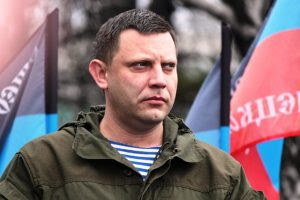
(Aleksandr Zakharachenko, First Minister of the Donetsk Peoples Republic)
There have been several OSCE reports over the months indicating that OSCE monitors of the contact line in Donbass have encountered hostility and threats from soldiers representing the Donetsk People’s Republic (DPR) in the course of doing their job. I’m also aware of reports that many in the DPR do not trust the OSCE monitors and believe them, for various reasons, to be biased.
Consequently, DPR’s leader Aleksandr Zakharachenko, had a meeting with leaders of the OSCE mission in Ukraine, after which he gave the following statement:
We have discussed with Mr. Hug all the questions which are of interest for, on the one hand, the OSCE monitoring mission and, on the other hand, the Donetsk People’s Republic. In particular, it was issues relating to the ceasefire o the contact line. In this regard, I appealed to Mr. Hug with a request for the OSCE mission to be more objective.
With regard to the security of the OSCE observers in the Donetsk People’s Republic, I suggested that Mr. Hug consider an option of our officers accompanying the observers. Then we will be able to take responsibility not only for the safety of the observers, but also for the fact that there will be no obstacles and misunderstandings in the performance of their duties.
In addition, I made a proposal that the OSCE warn us about the work of their drones. In this case, no one will interfere with their work. Otherwise, our military perceive drones as unidentified aircraft that may pose a threat to our residents. As it is known, recently, the Ukrainian side has been using their drones not only for the reconnaissance and subsequent shelling, but also directly to attack, stuffing their UAVs with explosives.
On the whole, the conversation was constructive, and we agreed to meet again after Mr. Hug ponders my suggestions.
********************
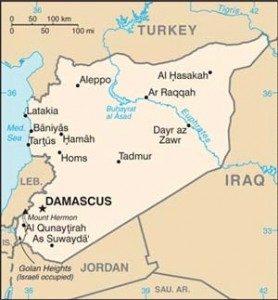
(Map of Syria; https://consortiumnews.com/2016/08/23/propaganda-for-syrian-regime-change/)
Rick Sterling, whom was an acquaintance of mine during the mid-2000’s when we both volunteered for the Mt. Diablo Peace & Justice Center in Walnut Creek, has gone on several fact-finding missions to Syria in the past couple of years. His latest article details how the American people are being primed with propaganda to support military escalation on behalf of regime change in Syria, being sold under the “humanitarian” label:
….There has been lots of publicity around a letter to President Obama, supposedly written by 15 doctors in East Aleppo. The letter ends “We need your action.” The flow and wording of the letter suggests it may have been composed by a marketing company and there has been no verification of the doctors who supposedly signed it.
The letter was likely written by a paid Syria War propagandist or Washington lobby firm. Read the letter here and judge for yourself. For contrast watch this interview with a real Syrian doctor not mouthing propaganda from K Street in Washington D.C.
An online Change petition asks German Chancellor Angela Merkel and President Barack Obama to “save the people of Aleppo.” The publicly funded Holocaust Memorial Museum has promoted the video #SaveSyria. One of the producers of the video is The Syria Campaign which is the marketing organization which branded the pervasive “White Helmets,” as documented in “Seven Steps of Highly Effective Manipulators”.
In parallel with this media campaign, the House Foreign Affairs Committee has introduced HR5732 the “Caesar Syrian Civilian Protection Act of 2016.” The resolution calls for escalating economic/financial pressure on Syria and “Assessment of potential effectiveness of and requirements for the establishment of safe zones or a no fly zone in Syria”.
Dr. Sahloul, the Syrian American Medical Society doctor / spokesperson, says that Obama’s legacy will be defined by whether or not he attacks Syria to impose a “no fly zone.” It seems unlikely that Obama would do that at the end of his term. Instead, the goal is to prepare the public for the new war to begin after Hillary Clinton becomes President.
….Here a few facts about Aleppo which contradict the mainstream media narrative:
–At least 85 percent of Aleppo’s population is in government-controlled areas.
–The estimate of 300,000 civilians in rebel/terrorist-controlled east Aleppo is likely a gross exaggeration. In spring 2015, Martin Chulov of the Guardian visited the area and estimated there were 40,000.
–While there are very few doctors serving in the opposition-controlled Aleppo, there are thousands of doctors working in the government-controlled area.
–The dominant rebel-terrorist group in Aleppo is the Syrian version of Al Qaeda.
–The armed groups who invaded Aleppo have been unpopular from the beginning. In the fall of 2012, journalist James Foley wrote: “Aleppo, a city of about 3 million people, was once the financial heart of Syria. As it continues to deteriorate, many civilians here are losing patience with the increasingly violent and unrecognizable opposition — one that is hampered by infighting and a lack of structure, and deeply infiltrated by both foreign fighters and terrorist groups.” (Foley was later captured by Syrian rebels and executed by the Islamic State on Aug. 19, 2014.)
–The rebel-terrorists launch dozens and sometimes hundreds of mortars daily into the government-controlled areas causing huge casualties. Western media ignores this destruction and loss of life.
–The much publicized April bombing of the supposed Medecins sans Frontieres-supported “Al Quds Hospital” in Aleppo was full of contradictions and discrepancies. These were highlighted in an Open Letter to MSF. To this date, MSF has not provided corroborating information.
–Much of the video purporting to show bombing effects in Aleppo are stamped with the “White Helmets” logo. White Helmets is a creation of the U.S. and U.K. and primarily a propaganda tool. The claims they are Syrian, independent and non-partisan are all false.
–Much of the information about Syria comes from “activists” trained and paid by the U.S. In her book Hard Choices, Secretary Clinton says the U.S. provided “training for more than a thousand (Syrian) activists, students, and independent journalists” (p464, hardback version). Obviously they are not independent and their reports should be carefully checked.
–In contrast with the ambiguous situation at “Al Quds Hospital”, consider what happened to Aleppo’s “Al Kindi Hospital.” Take three minutes to view the suicide bombing of Al Kindi Hospital. Take two minutes to view what the “rebels” did to Syrian soldiers who had been guarding the hospital.
–Like NBC correspondent Richard Engels’s fake kidnapping and the contrived CNN reports by “Syrian Danny,” the Aug. 21, 2013 chemical attack in Ghouta has been essentially shown to have been a staged event intended to force a U.S. attack on the Syrian government by making it appear that President Bashar al-Assad had crossed President Obama’s “red line.”
–The latest propaganda tool being used to promote U.S. aggression against Syria is the photograph of little Omran in the orange ambulance seat. The video comes from the Aleppo Media Center, or AMC. Like the White Helmets, AMC is a U.S. creation.
The photo of Omran has been widely accepted without scrutiny. The insightful Moon of Alabama has raised serious questions about the media sensation. Brad Hoff has documented that the main photographer, Mahmoud Raslan, is an ally of the Nour al Din al Zenki rebel terrorists who beheaded a young Palestinian Syrian a few weeks ago, confirmed step by step in this short video. Another good short video exposing the propaganda around #Syrianboy is here.
Why the Burst of Propaganda?
The Syrian crisis is at a critical point with the prospect that the rebel/terrorists will collapse. If they are crushed or expelled, it would allow hundreds of thousands of displaced Aleppans to return home as soon as services are restored. This would also allow the Syrian army and allies to focus on attacking the Islamic State in the east and rebel/terrorist groups remaining in Idlib, Hama, the outskirts of Damascus and the south.
The full article can be read here.
